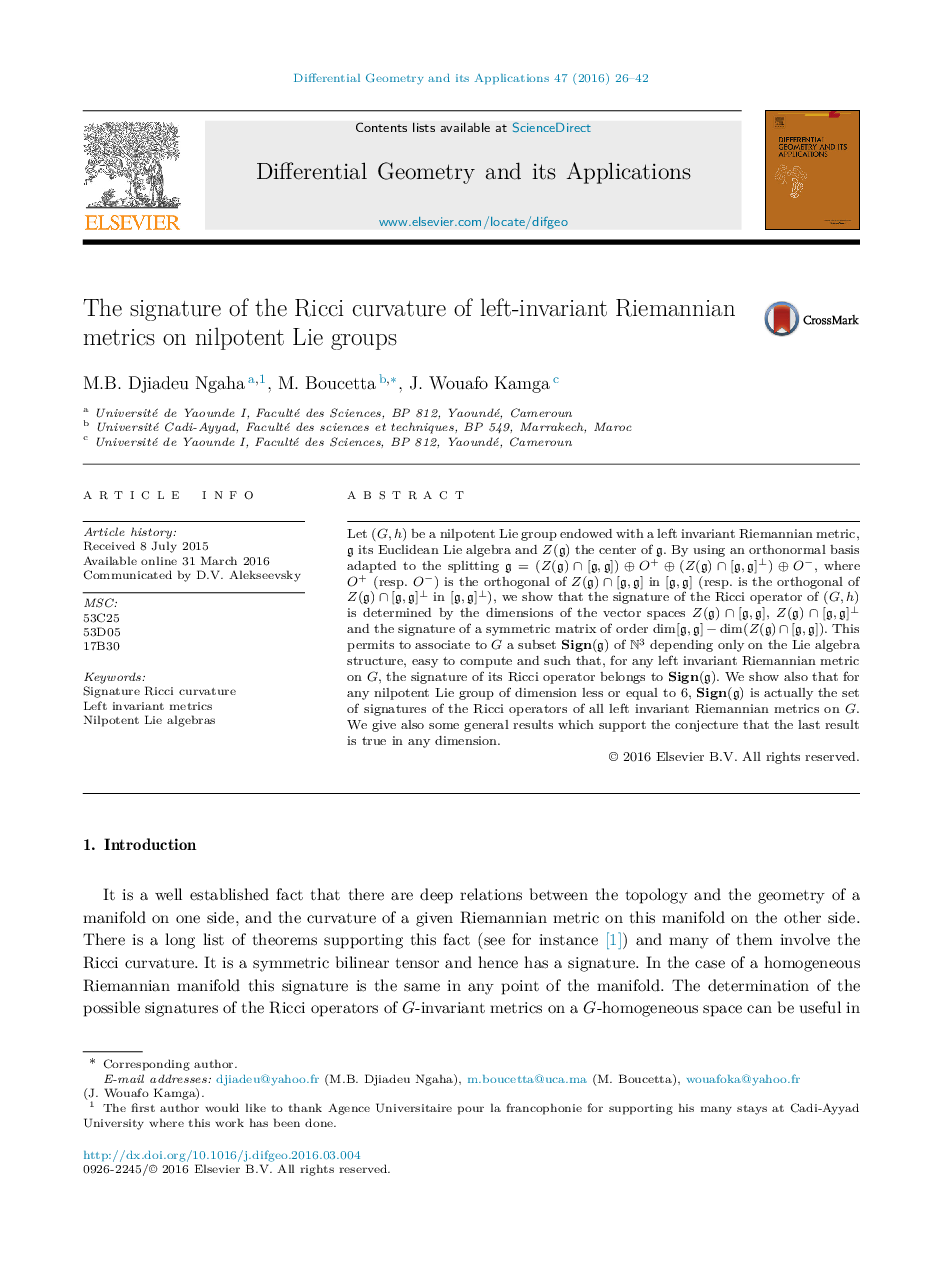| Article ID | Journal | Published Year | Pages | File Type |
|---|---|---|---|---|
| 4605798 | Differential Geometry and its Applications | 2016 | 17 Pages |
Let (G,h)(G,h) be a nilpotent Lie group endowed with a left invariant Riemannian metric, gg its Euclidean Lie algebra and Z(g)Z(g) the center of gg. By using an orthonormal basis adapted to the splitting g=(Z(g)∩[g,g])⊕O+⊕(Z(g)∩[g,g]⊥)⊕O−g=(Z(g)∩[g,g])⊕O+⊕(Z(g)∩[g,g]⊥)⊕O−, where O+O+ (resp. O−O−) is the orthogonal of Z(g)∩[g,g]Z(g)∩[g,g] in [g,g][g,g] (resp. is the orthogonal of Z(g)∩[g,g]⊥Z(g)∩[g,g]⊥ in [g,g]⊥[g,g]⊥), we show that the signature of the Ricci operator of (G,h)(G,h) is determined by the dimensions of the vector spaces Z(g)∩[g,g]Z(g)∩[g,g], Z(g)∩[g,g]⊥Z(g)∩[g,g]⊥ and the signature of a symmetric matrix of order dim[g,g]−dim(Z(g)∩[g,g])dim[g,g]−dim(Z(g)∩[g,g]). This permits to associate to G a subset Sign(g)Sign(g) of N3N3 depending only on the Lie algebra structure, easy to compute and such that, for any left invariant Riemannian metric on G , the signature of its Ricci operator belongs to Sign(g)Sign(g). We show also that for any nilpotent Lie group of dimension less or equal to 6, Sign(g)Sign(g) is actually the set of signatures of the Ricci operators of all left invariant Riemannian metrics on G. We give also some general results which support the conjecture that the last result is true in any dimension.
